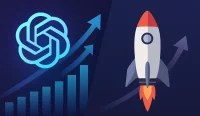In today’s increasingly remote and digital work environment, Employee Monitoring Software has emerged as a vital tool for businesses aiming to boost productivity, ensure data security, and maintain compliance. From time tracking and screen monitoring to detailed activity logging and analytics, modern monitoring solutions like Kickidler are transforming the way organizations manage their workforce.
Whether managing in-house teams or overseeing remote employees across different time zones, businesses are recognizing the value of using Employee Monitoring Software not just to track performance—but to enhance it.
What Is Employee Monitoring Software?
Employee Monitoring Software which is a digital tool set that allows employers to watch, record, and analyze employee action during work hours. Businesses have at their disposal present and past data which tells how work is getting done, which systems are accessed and how time is spent through the day.
Beyond the scope of surveillance which is a feature, what businesses see is that this software plays a role in improving workflow management, they see that it also puts forward performance data and that which is very much the company policy and productivity standards are in check. As companies go to hybrid and remote models which is the new normal, what is noted is the growth in importance of a centralized monitoring platform.
Key Features of an Effective Employee Monitoring Tool
A present day Employee Monitoring tool is made up of features which aim to give employers a full picture of what is going on in the workplace. By and large the main and most useful elements of these are:
- Time Tracking: Automates tracking of work hours, breaks, and overtime. This improves on payroll accuracy and performance evaluation.
- Screen Monitoring and Recording: Provides present and past data to employees’ screens which in turn promotes open practice.
- Activity Logging: Tracks user input from keyboard and mouse movement, also measures time spent in different applications and which websites are visited to determine engagement levels.
- Automated Reporting: Provides visual reports and productivity metrics which in turn enable team comparison and project tracking.
These features which in total allow for identification of bottlenecks, recognition of high performers, and efficient reassignment of resources.
Benefits of Employee Monitoring Software
The wide range of benefits from using Employee Monitoring Software is for all parties.
For Employers:
- Increased Productivity: Through the identification of time wasters and promotion of better time management.
- Reduced Operational Costs: Automation of time tracking, reduced idling, and best use of resources.
- Better Remote Work Management: Real time awareness of remote teams improves accountability and alignment.
For Employees:
- Clarity and Structure: Defined expectations which are backed by measurable data.
- Recognition and Fairness: Exact data supports what is given out and fair evaluation.
- Support for Flexible Work: Confirms employee performance in remote work settings.
When put to responsible use monitoring software encourages a culture of accountability and growth.
Addressing Compliance and Privacy Concerns
A primary issue with Employee Monitoring Software is privacy and compliance. Businesses must see to it that their monitoring practices are in fact in accordance to laws such as the General Data Protection Regulation (GDPR), the California Consumer Privacy Act (CCPA) as well as the applicable industry based compliance rules.
Ethical monitoring involves:
- Transparent policies communicated clearly to employees.
- Obtaining consent where required.
- Monitoring done between 9 to 5 and on issued devices.
- Open up the data logs.
Choosing which ever software provider that is Kickidler businesses have the guarantee that practices will be in compliance and respect of employee rights.
Use Cases Across Industries
Employee Monitoring Software doesn’t just serve tech startups or remote teams. It is used in many different sectors to address unique issues:
- IT & Software Development: Tracks project timelines, code contributions, and collaboration metrics.
- Customer Support Centers: Enables the use of call recording and screen monitoring.
- Financial Services: Ensures the safe keeping of sensitive data and maintains audit logs.
- Design and Creative Agencies: Tracks project time for exact client billing and performance reviews.
In every instance monitoring software has adapted to the industry’s pace and priorities which in turn makes it a valuable investment.
How to Choose the Right Employee Monitoring Software
Choosing what is the best solution depends on a company’s size, structure, and what it is trying to achieve. Which to go with includes:
- Scalability: Can the team or organizational growth outpace the tool?
- Integration: Does it integrate with present project management, HR or payroll tools?
- Ease of Use: Is out the box usability of the dashboard for managers and staff?
- Customization: Do custom reports and alerts exist?
- Support & Security: Does the company provide strong customer support and data protection?
Platforms that have this in mind in design are Kickidler which is put forward as the best option for all sizes of business.
Implementation Best Practices
To get out the best from Employee Monitoring Software it is important to implement it thoughtfully:
- Open Communication: Explain to employees what monitoring is used for, what benefits it brings and what is out of its scope.
- Create Policies: Draft out and share which are in alignment with legal and ethical standards.
- Pilot Program: Start with a pilot on certain teams to test out effectiveness and get feedback.
- Training: Make sure that employees and managers are trained on the system and what the data means.
- Monitor and Adjust: Ongoing review of results and modification of practices to fit organizational needs.
Proper deployment also builds trust and sees greater adoption and impact.
Trends and the Future of Employee Monitoring Tools
In the ever changing field of employee monitoring the outstanding trends are:
- AI and Predictive Analytics: Tools that predict burnout, performance drops, or project delays.
- Employee Wellness Monitoring: Non interfering health monitoring which also supports work life balance.
- Cloud-Based Monitoring: Enables instant access and decreased IT overhead.
- Mobile and BYOD Integration: Monitoring is for mobile first teams.
These issues point out that monitoring tools are for more than control — they are also used to create better healthier work environments.
Conclusion
Employee tracking software is a must in today’s ever changing business climate. Which also includes support for remote teams and improved compliance it enables companies to do well?
To get the most out of this tech, businesses should put forth an effort in transparency, ethical implementation and customization. Solutions like Kickidler which present in depth tools for these issues are a good choice for progressive companies.
Adopt the best Employee Monitoring tool for your business to turn the team into one that is more productive, efficient and secure.




